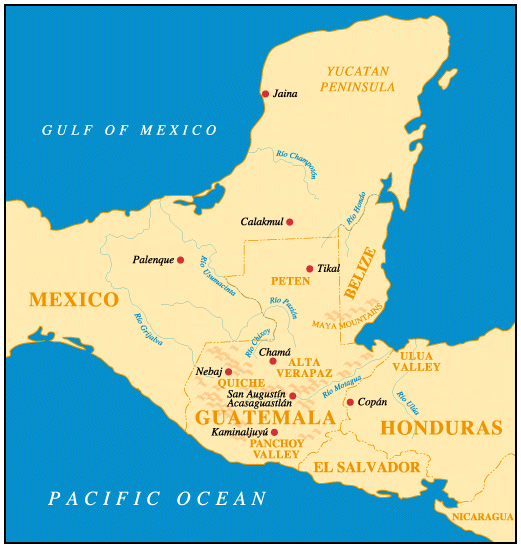Worldviews: Maya Ceramics from the Palmer Collection
The Palmer Collection
The late William P. Palmer III of Falmouth Foreside, Maine amassed a large collection of Precolumbian objects during the 1960s and early 1970s. A 1982 bequest to the University of Maine, the Palmer Collection became the core collection of the Hudson Museum, which opened in 1986
Palmer purchased most of his Maya vases and other artifacts from one New York City dealer between 1968 and 1970. Typed index cards which Palmer kept told when he bought the ceramic pieces and whatever information the dealer knew about where they originated, when they were made and what the decorations represented. Unfortunately, some of the information was inaccurate, which has become increasingly apparent as scholars have published studies of other collections of ceramics. This exhibit interprets symbolism and hieroglyphs in light of the most recent scholarship.

What can be learned from the ceramics about the Maya is considerable, but much information was lost when looters illicitly dug them up. Since the pieces were not scientifically excavated by archaeologists, when they were manufactured or where they were found are often unknown. The U.S. ratified the UNESCO Convention on the Means of Prohibiting and Preventing Illicit Import, Export and Transfer of Ownership of Cultural Property in 1983, after the Palmer Collection was created. Despite this, the antiquities market continues to drive the wholesale destruction of important archaeological sites in Mexico and Central America today.
Maya Writing & Symbolism
The ceramics and other artifacts in this exhibit, generally produced by Maya scribes and artisans during the Classic period, contain a wealth of information about Maya ideology–religion, beliefs and cosmic concerns. Debate continues within the field of anthropology about whether ideology, reflected in iconography (pictorial symbolism) and epigraphy (writing), defines social structure and drives technological development, or simply validates social structure, which is supported by technology.
Members of the Maya royalty and nobility during the Classic period were fully literate. Scribes produced painted books called codices, carved stone monuments and painted and incised ceramic plates, bowls and vases. Scribes continued to create codices throughout the Postclassic. Zealous conquerors who viewed the codices as works of the devil burned all but four of them during the 15th century. The ability to write and read hieroglyphic texts and interpret the symbolism of pictures was all but lost soon afterward. Only since the 1950s has significant progress been made in interpreting the texts and pictures of remaining codices, ceramics and stone monuments.
The ceramics show views of a variety of worlds important to the Maya. On some vessels are the gods, monsters and heroes of Xibalba, the Underworld. On others are palace scenes with rulers and their attendants. Some show aspects of the cosmos so integral to the cyclical Maya universe. Plants and animals from the world of nature appear on a final class of ceramics.
Maya Civilization
Classic Maya civilization existed in southeastern Mexico, the Yucatán Peninsula, Guatemala, Belize, western Honduras and western El Salvador. Although often described as a lowland tropical forest culture, important Maya sites also developed in the highlands, along the coasts and in relatively dry regions. Maize was the staple crop.
Maya civilization arose during the Preclassic period, but it was during the Classic period that it reached its pinnacle of technological developments, social complexity and intellectual achievements in writing, mathematics, calendars and astronomy. Scholars divide the Classic period into the Early Classic (A.D. 250-600) and Late Classic (A.D. 600-900). Toward the end of the Classic period people in the southern lowlands ceased erecting dated commemorative monuments and abandoned many important sites.
The civilization continued in modified form during the Postclassic period in the highlands of Guatemala and in the northern Yucatán until the arrival of the Spanish in the early 1500s. Since then the governments of the region have attempted to dominate and exploit the Maya, with varying degrees of success. Conflict has been common during the last 500 years and the Maya have managed to retain many of their beliefs and customs to this day.
